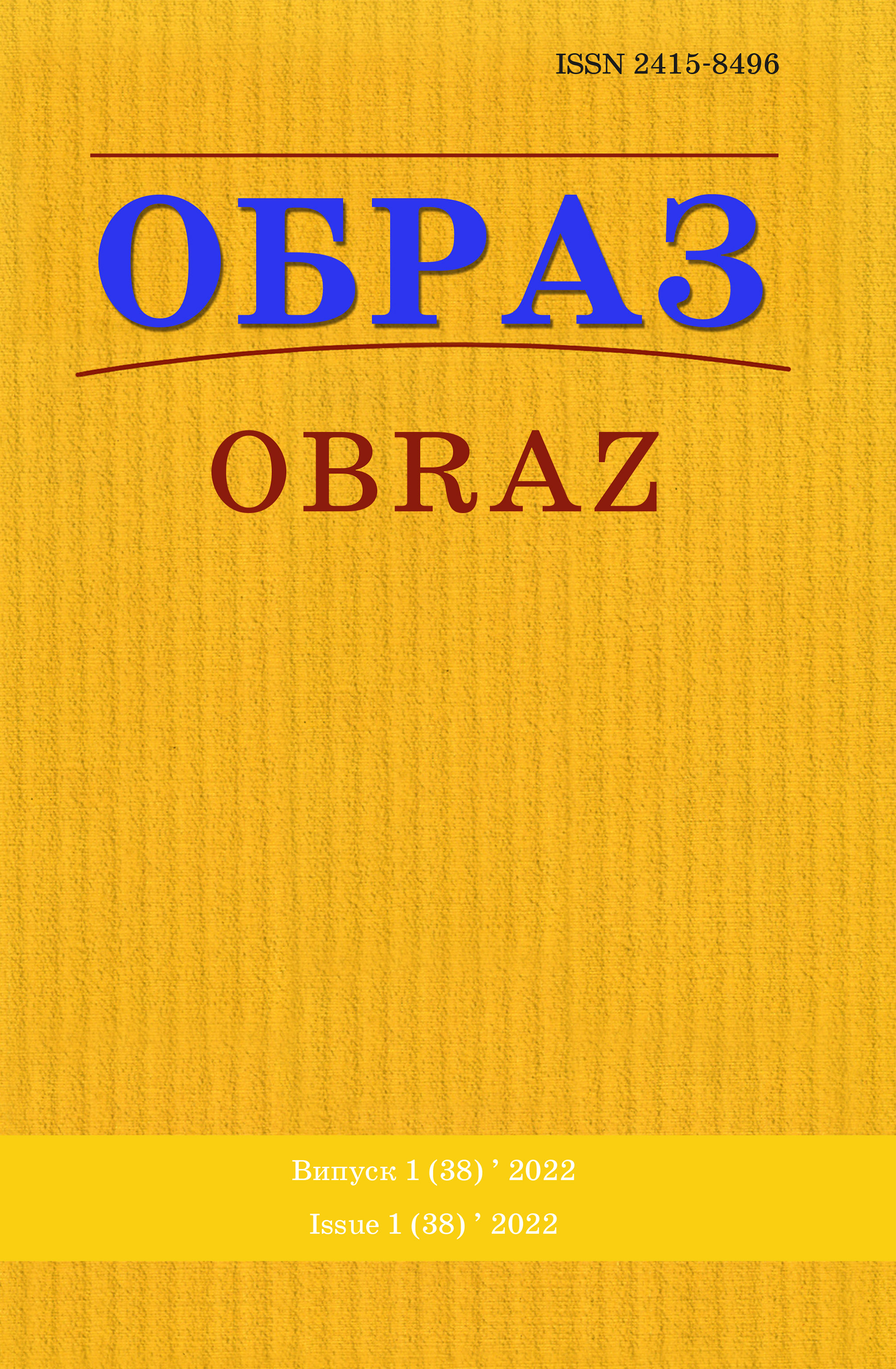Abstract
Introduction. During 1943–1960, the formation of Ukrainian identity was directly influenced by communist ideology, as well as the totalitarian system of government of the USSR, which, formally (constitutionally) giving nations their own cultural development and equal rights within the USSR, actually implemented a policy of supremacy and elitism. Thus, in this period it was not so much about the formation of Ukrainian identity, but about the reformatting and creation of such a phenomenon as Homo Soveticus (Soviet man).
Relevance of the study. The article aim is to reveal the strategy of conceptualization of the Soviet identity in the context of ideologizing society by mass media and propaganda. Methodology. Such methods as content-analysis, work with archival sources, psycholinguistic analysis of texts.
Results. As a result, the author concludes that the Sovietization of Ukrainian reality took place through media reports, which clearly distinguished between the concepts of «friend» and «enemy», as well as formed the attitude to the Ukrainian through the so-called strategy of «soft Russification by Zhdanov». Thus, the formation and self-identification of the Soviet personality was determined by the principle of full perception of the USSR and the activities of the Communist Party. There was a complete replacement of values (religion was replaced by ideology, the role of preacher fell on the shoulders of the agitator, etc.), as well as the gradual leveling of national customs and traditions (leaving visual attributes – dressing Ukrainian costumes for «special» occasions, – the internal meaning was eradicated, and also the feeling of simmering situation developed, which, in the end, led to the rejection of Ukrainian as inferior, unfashionable, unnecessary).
Conclusion. Further study of the peculiarities of the formation of Soviet identity will provide an opportunity to develop ways to form the Ukrainian information space and protect it from information attacks of aggressor countries.
References
1. Brovarchuk, Yu. (1943), «In the night battle: How I lined up four German tanks», Sovietskyi Voin [Soviet warrior], no. 71 (311), p. 3.
2. «What is our strength», Sovietskyi Voin [Soviet warrior], 1943, no. 107 (347), p. 3.
3. «Where there is indifference, there is boredom», Molodyi Communar [Young Communard], 1960, no. 10 (283), p. 2.
4. «Before the establishment of a public press agency in the USSR», Molodyi Communar [Young Communard], 1961, no. 14 (365), p. 2
5. Zemlyuk, V.P. (2007), Political Identity in Ukraine During the Crisis of «Developed Socialism» and Gaining State Independence, PhD diss. (polit. sci.), National Academy of Science of Ukraine, Kuras Institute of Political and Ethnical Studies, 233 p.
6. Kolodiy, A.F. (2008), National Dimension of Social Life, Astrolabe Publishing House, Lviv, 352 p.
7. Kulchytsky, S.V. (2008), «Constitutional reform in the USSR in 1963», Encyclopedia of the History of Ukraine : vol. 5, Naukova Dumka Publishing House, Kyiv, 568 p., available at: http://www.history.org.ua/?termin=Konstitutsiyna_Reforma_V_Srsr_1936 (accessed 28 September 2021).
8. Lazarenko, O. (2003), «Political identification and political power in today’s Ukraine: illusions and horizons of new expectations», Ukraine is a problem of identity: man, economy, society. Conference of Ukrainian graduates of research internship programs in the USA, Lviv, September 18–21, pp. 155–158.
9. Moldavska, T. (2013), «Soviet identity and its influence on the formation of modern social stereotypes of the elderly (according to oral historical sources in southern Ukraine)», Proceedings. Culturology series [Proceedings. Culturology series], vol. 12, pp. 38–48.
10. Nagornaya, L.P. (2008), Regional Identity: the Ukrainian Context, National Academy of Science of Ukraine, Kuras Institute of Political and Ethnical Studies, Kyiv, 405 p.
11. Nikitin, S. (1943), «Dear, save! Stories of 36 peasants fleeing from Nazi oppression», Sovietskyi Voin [Soviet warrior], no. 109 (349), pp. 3–4.
12. Ovcharenko, G. (1943), «The feat of nine guardsmen», Sovietskyi Voin [Soviet warrior], no. 56 (296), p. 2.
13. Pochapska, O. (2021), «Formation of the agenda in printed perisodical editions of 1943 (based on the analysis of the newspapers “Azov Herald”, “Bobrynetsky Voice”, “Bug”, “Renaissance”)», Synopsis [Synopsis], no. 27 (1), pp. 14–21.
14. Romanyuk, V. (2016), «Social destructiveness and media terrorism: conceptual and theoretical aspect», TV and radio journalism [Tele- i Radiozhurnalistyka], vol. 15, pp. 219–223.
15. «Your place in the field, agitator!», Molodyi Communar [Young Communard], 1960, no. 9 (282), p. 2.

This work is licensed under a Creative Commons Attribution 4.0 International License.

